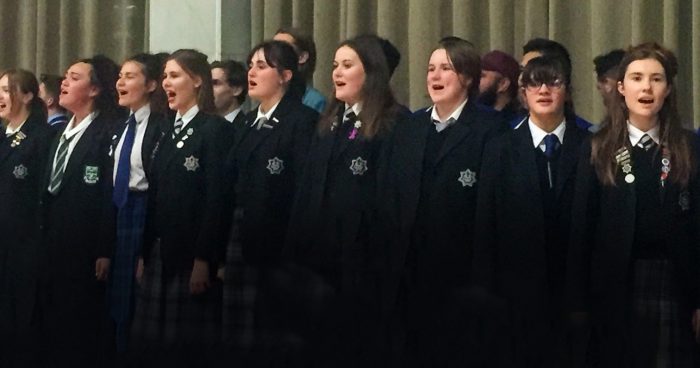MA19 – Ko Aotearoa Tēnei – This is New Zealand was a bold statement of intent directly referencing the eponymous 2011 WAI262 Waitangi Tribunal report, Ko Aotearoa Tēnei (This is New Zealand). It therefore followed that our three days at the Museum of New Zealand Te Papa Tongarewa would include a challenge to review and reflect on the underlying hopes, aspirations and achievements of the Treaty process, against the backdrop of the claim made in the WAI262 Claim Report that Aotearoa New Zealand was entering a new post-Treaty era of partnership.
 The Conference Dinner was held at Parliament’s Banquet Hall hosted by Hon Grant Robertson, Associate Minister Arts, Culture and Heritage, where attendees enjoyed a powerful performance from the rangatahi kapa haka group of Te Rākau Hua O Te Wao Tapu Trust, convened by Jim Moriarty. – https://www.terakau.org/
The Conference Dinner was held at Parliament’s Banquet Hall hosted by Hon Grant Robertson, Associate Minister Arts, Culture and Heritage, where attendees enjoyed a powerful performance from the rangatahi kapa haka group of Te Rākau Hua O Te Wao Tapu Trust, convened by Jim Moriarty. – https://www.terakau.org/
 Digitisation Technician & Project Leader Nigel Roper demonstrating our 3D scanning technology at the NZMS Trade Stand.
Digitisation Technician & Project Leader Nigel Roper demonstrating our 3D scanning technology at the NZMS Trade Stand.The break-out sessions are invaluable as well, and my colleagues and I enjoyed the Curatorial workshops where participants were able to discuss anything and everything museum-related, from career pathways to repatriation challenges. I found it particularly fascinating to hear David Hepplethwaite Director and Story-teller at the Art of Fact, and Puawai Cairns, Head Mātauranga Māori at Te Papa, tag-teaming as they unpacked the process of developing Te Papa’s new conceptual master plan, hopeful they have arrived at a framework that will weave together approaches from Western museological practice with Mātauranga Māori.
I’ve been to many MA conferences and one of the great drawcards is the program committee’s skill at interlacing raw, emotional and confronting presentations with other goings-on in the museum and tourism sector, such as exhibitions and projects (with successes and failures teased out), and education and advancement opportunities in the museum world. Another obvious drawcard is the many opportunities to network. NZMS staff formed a reasonable-sized cohort and we thoroughly enjoyed meeting old friends, making new ones and discussing life in and around the GLAM sector. It was also good to have time during the Wellington Innovation Breakfast on Friday morning to demonstrate 3D-Scanning-as-a-Service, as this new offering has been generating quite a bit of interest.
Reflecting on the overall experience during my flight back to Auckland, I was struck by the way these gatherings are more than the sum of their parts: in the conversations facilitated annually by the MA Conference, people and ideas are connected, re-formed and inspired, opening new and safe spaces for diversity and dialogue. It seems to me that this has the flow-on effect of ensuring the sector is held to account year-on-year, perhaps a by-product of the event, but nonetheless vital for those trusted to work with the holders of cultural memory.
